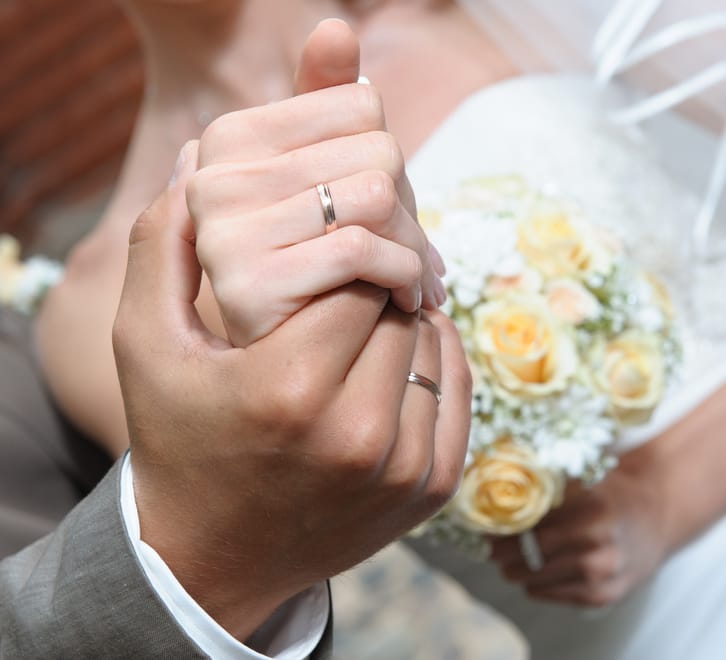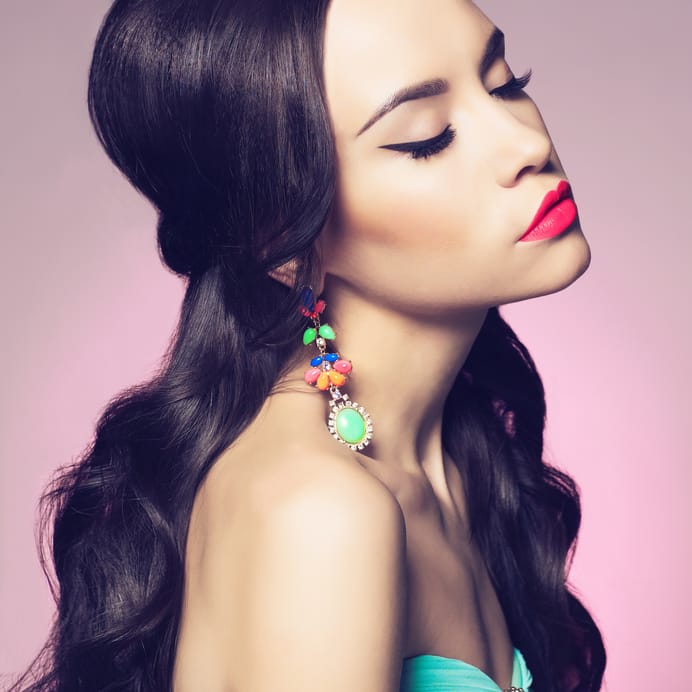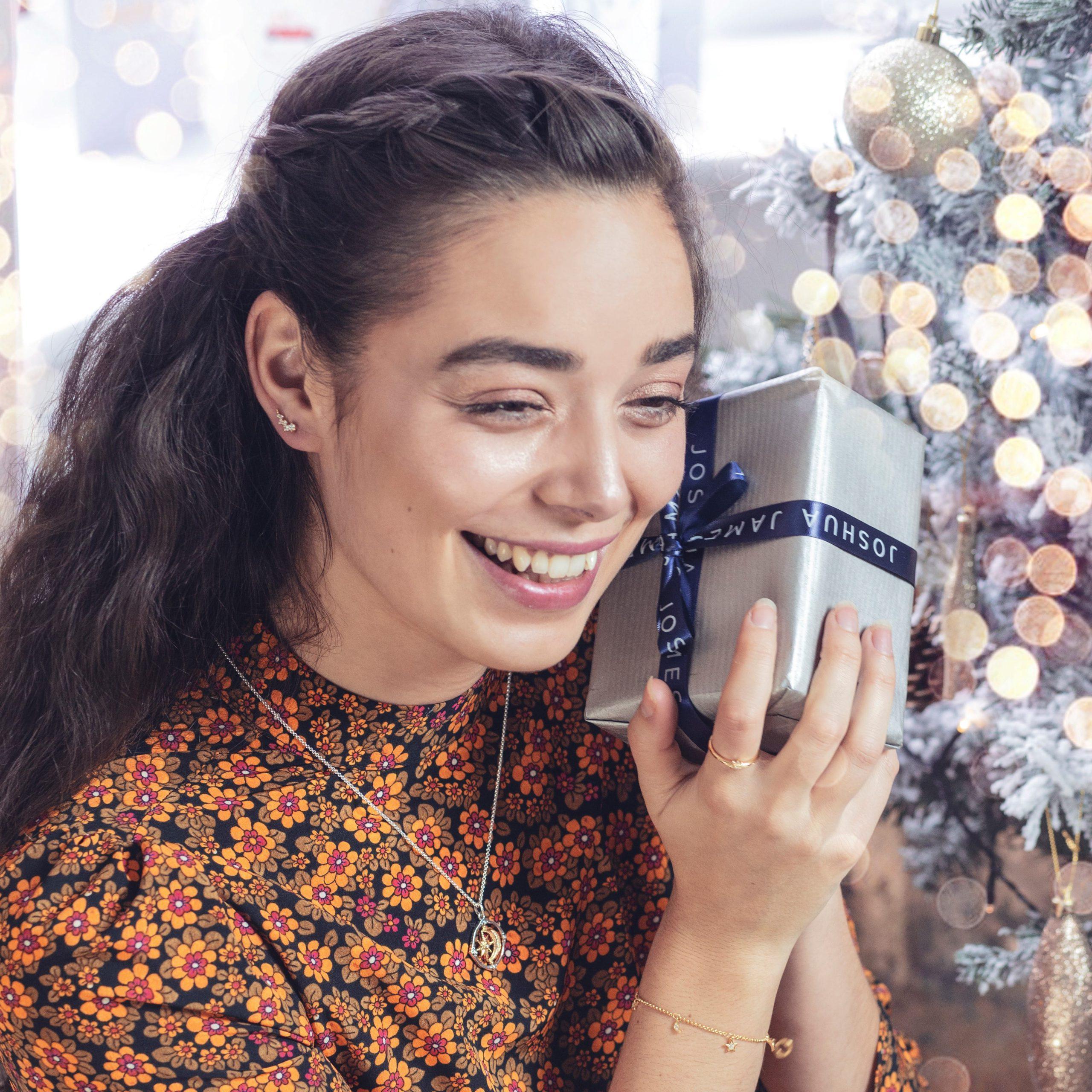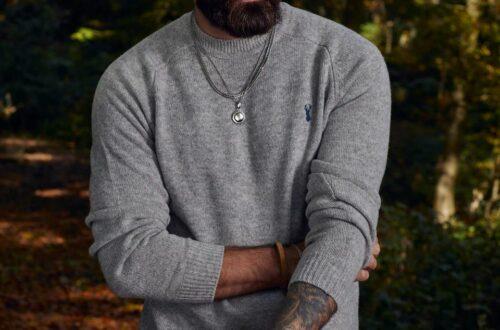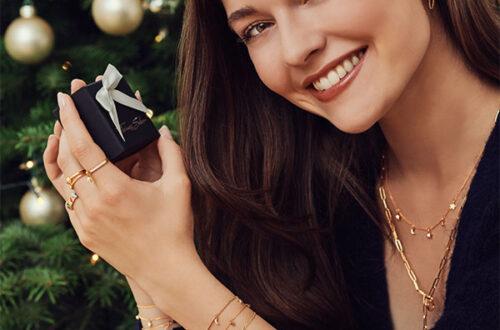Have you ever wondered why there are so many different parts to a wedding that have become a standard part of any big day?
A lot of couples don’t even think about – it’s just the norm and automatically we choose to make the same choices as our friends and family members with personalised variations throughout the day.
That’s because weddings are full to the brim of traditions that we no longer even question.
In our society, weddings follow a certain structure and there are many rules that we feel we must follow to have the perfect day. But why?
We have a look at a few wedding traditions and explain exactly where they came from…
Asking For A Hand In Marriage
This whole exciting time in your life starts with one thing: a proposal. Traditionally, it’s the man’s job to do the asking, but these days, more and more women are popping the question – and not just on a leap year.
To this day, many men still like to ask the bride-to-be’s father for her hand in marriage. It has been a tradition for hundreds of years and shows a commitment to honour, respect and cherish his daughter by asking before the proposal takes place.
The archaic tradition is seen as old fashioned by some, yet the meaning has changed a lot over the years. Males are no longer asking ‘ permission’ for the daughters hand in marriage, but asking for the father’s blessing. Some now like to ask both parents together (or individually if they are separated) and ask how they would feel if they were to propose.
If you get on with your bride-to-be’s parents anyway, it shouldn’t be a daunting process, and many simply call them up and ask them to meet up before coming straight out with it and simply telling them their plans. Telling the parents that you are going to ask their daughter to marry them, and how much it would mean to you if you had their blessing is the best way to go about it.
There are a few cases where you may not feel that you can ask, in which case don’t feel that you have to – remember it’s only a tradition:
- If she doesn’t have the best relationship with him
- If he wouldn’t be invited to the wedding
- If you’re a more mature couple and would feel odd asking him when she has been independent for so long.
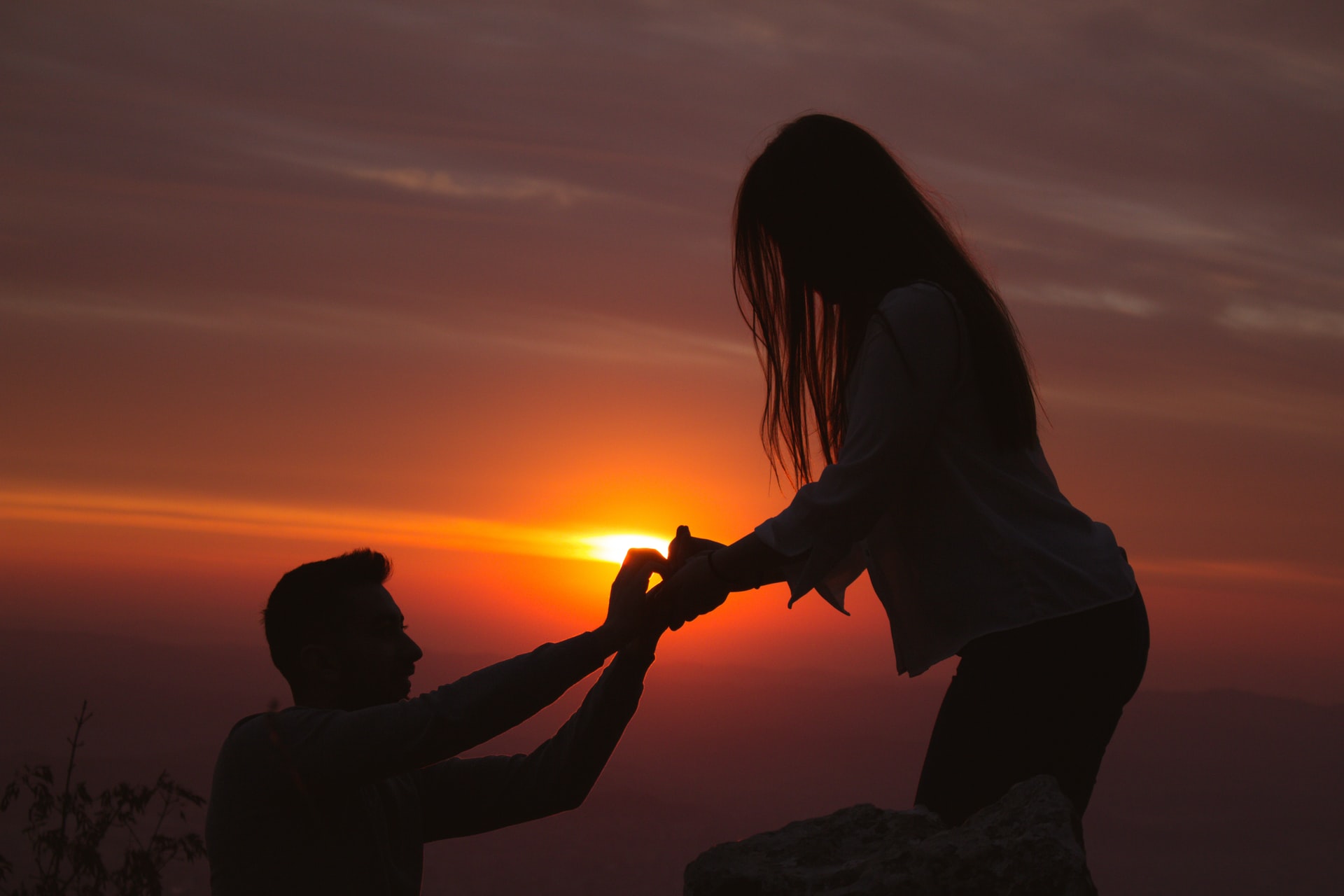
Not Seeing Each Other On The Morning Of The Wedding
This superstition stems back to people believing that the bride and groom shouldn’t see each other for one reason – in case the groom changed his mind! These days, after months or even years of planning, it’s pretty doubtful that this would happen, and the tradition turned into the idea that it would be unlucky for the groom to see the bride on their wedding day until the moment she’s walking down the aisle.
Today, couples tend to stick to this tradition purely for the anticipation. It makes the whole morning of the wedding more exciting and sits hand in hand with the tradition of the groom not seeing the wedding dress before the big day too. Seeing each other for the first time as the music cords begin and the bride walks down the aisle is something that many couples look forward to.
Lots of brides and grooms do now skip this tradition though, so if it’s not something you want to do or something that is not feasible for your situation, don’t feel like you have to or feel that your day will be tarnished by it. Many couples stay in the same room the night before, have breakfast together and even schedule all their pictures in with the photographer before the ceremony even starts, giving them more time to enjoy the day and mingle with their guests.
The Wedding Cake
Cutting the cake at the wedding is one of the biggest parts of the day. It usually happens after the Wedding Breakfast and before the first dance, but you can choose to cut your cake at any point you want throughout your day. These days, many people choose to cut the cake early in the evening for two reasons – so that the photographer can capture the moment before they leave for the day, and as an indication that the evening is coming to an end, as the cake will be fresh for anyone wanting to take some home with them.
It is traditional to have a layered cake, with three or four layers, often in different flavours with a fruit cake on the bottom to ensure the rest stay upright. It is symbolic as the first task that the newly-weds carry out together, but in truth, it’s purely a necessity for everyone to enjoy!
Bread and cake have been seen as celebration foods since the medieval times and back then, it was traditional for the bride and groom to receive small cakes from their wedding guests to kiss over, which would guarantee their future prosperity. The traditional tiered wedding cake that we now choose originated at the wedding of Prince Leopold, Duke of Albany, in 1882. Pillars between each of the tiers to keep the cake sturdy became the norm around 20 years later and were originally made from chopped broomsticks covered in icing.
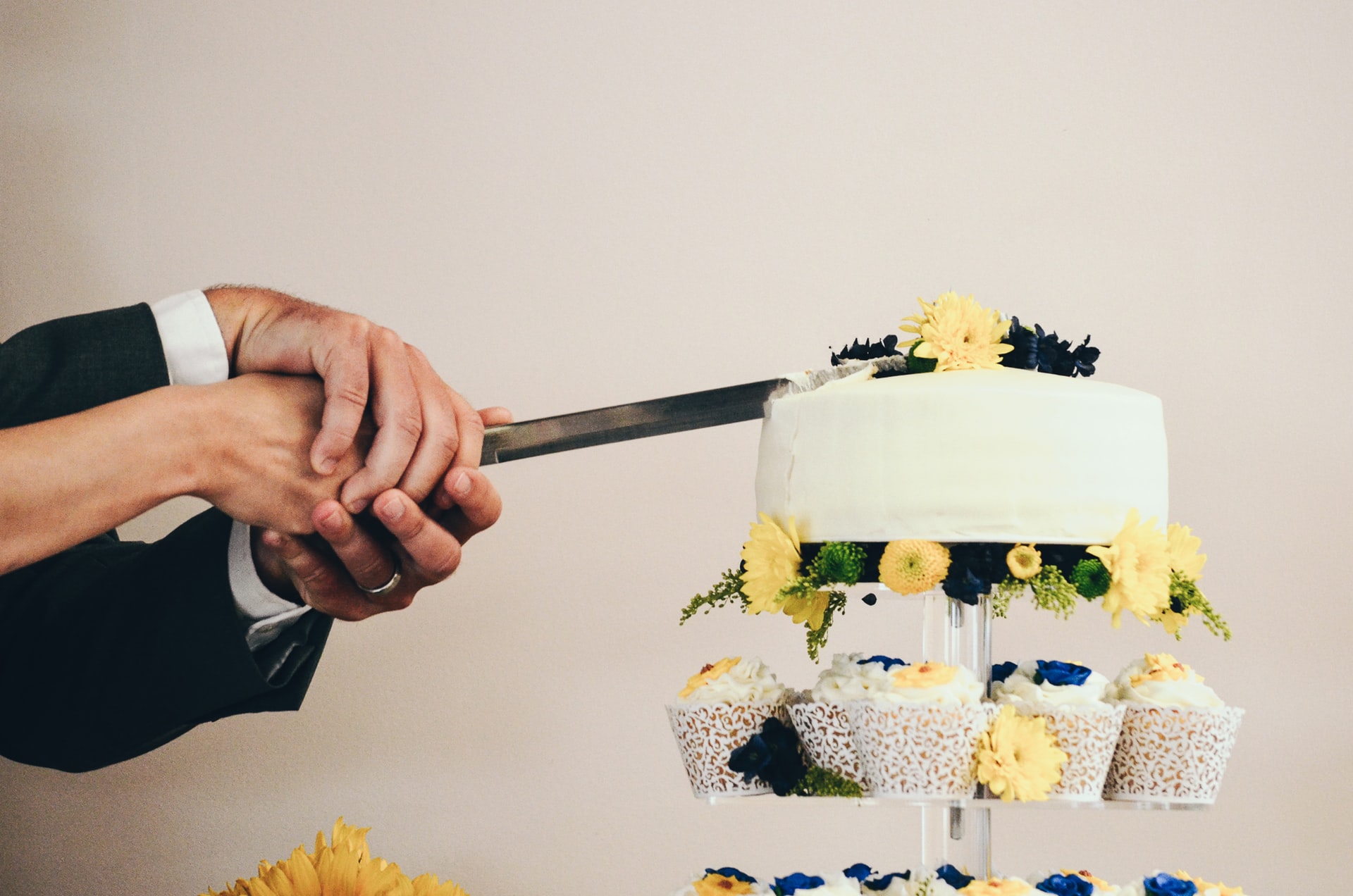
As cakes developed from the simple pastry to more elaborate cakes, it was difficult for the bride to cut the cake alone and needed her husband to help get through the frosting. Now, the bride would be perfectly capable in cutting the cake alone, but the groom places his hands over hers simply for the love of the tradition.
Saving the top layer of the cake for the couples first anniversary is another tradition that dates back to the 19th century. Fancy, multi-tiered wedding cakes were a major trend in that era and the top layer was typically saved for the christening of their first born, following form that after a couple were married, they would soon be starting a family.
Obviously, times change and now couples often freeze the top layer of their wedding cake and enjoy it together as a reminder of their special day. Some aren’t keen on freezing a cake for a year, and often get the baker to recreate a fresh one.
These days, many couples opt for something a little more alternative such as a single layered cake for cutting, accompanied by an array of cupcakes in their chosen colour scheme, meaning people can easily help themselves throughout the evening or take one away with them to enjoy later.
Throwing the Bouquet
We traditionally throw the bouquet as a fun little event on the dance floor after all the pictures have been taken. As the single women at the wedding gather round, it becomes a competition and whoever catches the bouquet will be the next to be married.
The story behind the tradition isn’t quite as fun though. In medieval times, hordes of guests would follow the newly-wed couple after the ceremony and stand around their bed trying to rip pieces of the brides dress from her, as it was considered lucky. Because their dress would obviously get ruined, brides came up with an alternative – throwing their bouquet to distract guests while they escaped.
In another tradition, when the bride and groom made it to safety, the groom would then throw the bride’s garter to the crowds of people outside to show them he was about to ‘seal the deal’.
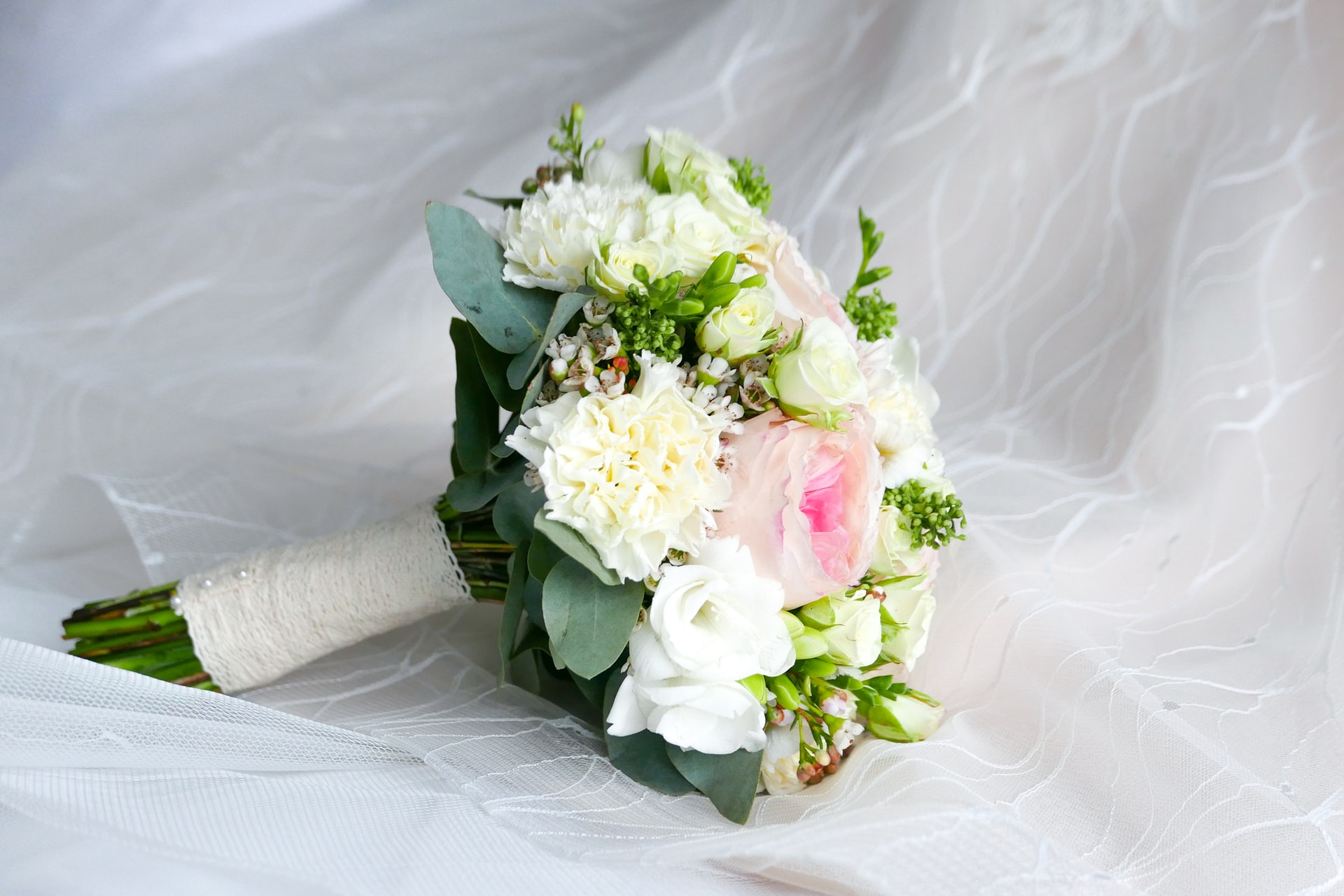
At modern weddings, the groom often removes the bride’s garter and throws it to the grooms-men in the same fashion as a bride throws the bouquet. Traditionally, the unmarried man who catches the garter must place it on the leg of the unmarried woman who catches the bouquet, and they will be the next two to marry (not necessarily to each other).
Although it’s a fun ritual, many couple choose to no longer include these traditions as guests can get injured easily and a lot of the single women are embarrassed to be dragged onto the dance floor. Some newly-weds decide to do an “anniversary dance” instead, to honour the couple attending their wedding who have been married the longest.
Wedding Jewellery
Jewellery is one of the biggest parts of any wedding. No proposal is complete without a beautiful engagement ring being presented to the bride-to-be whilst their partner is down on one knee. The wedding rings are also a huge part of the day, obviously, and different pieces of jewellery to accessorise your dress are key to completing the look of your wedding outfit. Let’s take a look at some of the key jewellery traditions to consider at a wedding…
Wedding Rings
The wedding band symbolises eternity as the circle is never ending. It has no beginning and no end, representing infinity. Some believe that the oldest recorded exchange of wedding rings was around 4800 years ago in Ancient Egypt. Materials such as reeds and rushes were braided and twisted to create rings for fingers and other ‘jewellery’ pieces for women.
Obviously, the materials for these rings didn’t last long and soon materials such as leather, bone and ivory were used instead. It was seen that the more expensive the material was, the wealthier the giver and the longer the love would last.
Traditionally the wedding ring is worn on the fourth finger of the left hand. This is because the vein in this finger was believed to lead directly to the wearer’s heart.
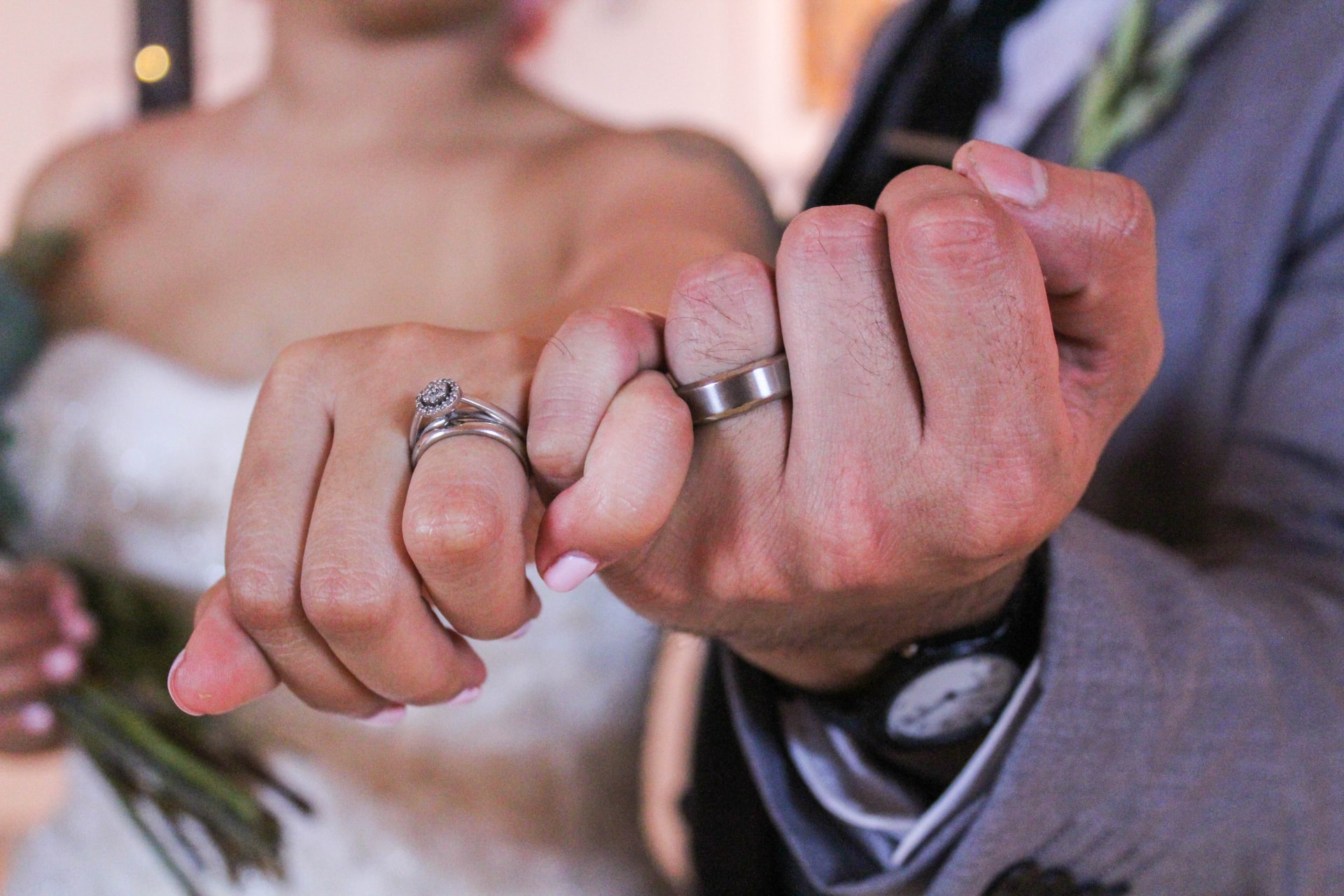
According to a tradition derived from the Romans, the wedding ring is worn on the left hand because of this and is referred to as the ‘Vena Amoris’ or the ‘Vein of Love’. However, scientists have shown this is actually false, although many hopeless romantics still see this as the reason.
Another reason for wearing the ring on this finger is derived from early Christian rituals of the priest reciting ‘In the name of the Father, the Son and the Holy spirit’ whilst touching the thumb, index finger and middle finger. The next finger along is the ring finger, which then sealed the marriage.
A more practical reason is the theory that the soft metal – traditionally gold – will stay less worn on the left hand, as the majority of people are right handed. The fourth finger on the left hand is also probably one of the least used fingers, meaning it won’t get in the way of anything or get damaged easily. Only the little fingers are used less, but putting a ring on the smallest finger means there is little surface area to decorate – either with diamonds and embellishments or with engraved messages, which a lot of couples choose to do now.
However, throughout different stages in history, wedding rings have been worn on fingers both on the left and right hands, including the thumb. There are many countries including Greece, Austria, Germany, Portugal, Russia and Spain where the wedding ring is worn on the right hand instead of the left, and in Jewish tradition, the groom places the ring on the bride’s index finger.
Wedding Pearls
Pearls are something that many brides wear as a traditional jewellery piece that goes well with the lace often found on a wedding dress, as well as fitting in with the ever popular vintage wedding theme.
To some, pearls represent future tears and are an unlucky item to wear. However others believe pearls act as a replacement for the bride’s tears, meaning she will have a happy, tear-free married life.
Pearls were first discovered thousands of years ago by people searching for food along the seashore and since then, the shimmering gems have become prized possessions to many.
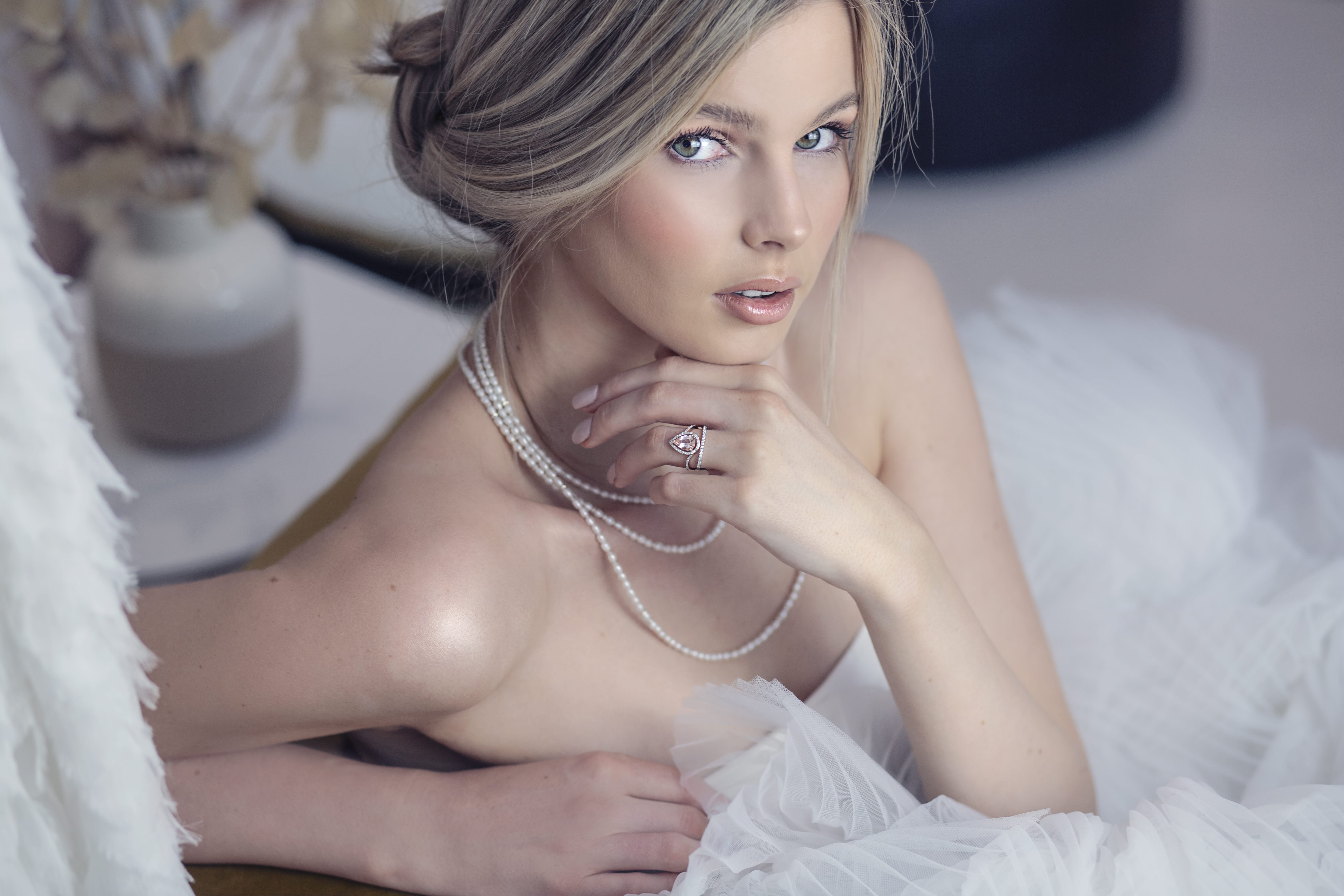
Cleopatra is said to have used pearls to win a bet with Marc Antony that she could consume the wealth of a country in one meal. She dissolved a pearl in a glass of wine, but it is said that this was really a trick to seduce him.
Pearls also signified different things across different eras of time. They were the ultimate symbol of wealth and social standing in Ancient Rome, and Ancient Greeks associated them with love, marriage and unrivalled beauty. They also believed that pearls promoted marital harmony and would prevent the bride from crying.
The Dark Ages saw knights wearing pearls on the battlefield as they believed that they were magic and would protect them from harm. During the Renaissance, pearls were regarded so highly that several European countries passed laws that anyone outside of nobility was not allowed to wear them.
Even today, pearls are still worn by royalty. Princess Diana’s well loved diamond tiara with pearl drops was designed in 1914, and has been worn by the Duchess of Cambridge recently.
Many brides have since opted for pearl embellishments on their own tiaras and like to incorporate pearls into their other jewellery to match. Queen Elizabeth wore pearls to her wedding in 1947, as did Sarah Ferguson.
These beautiful pearl accessories would be perfect as a simple and elegant touch to your outfit on your wedding day.
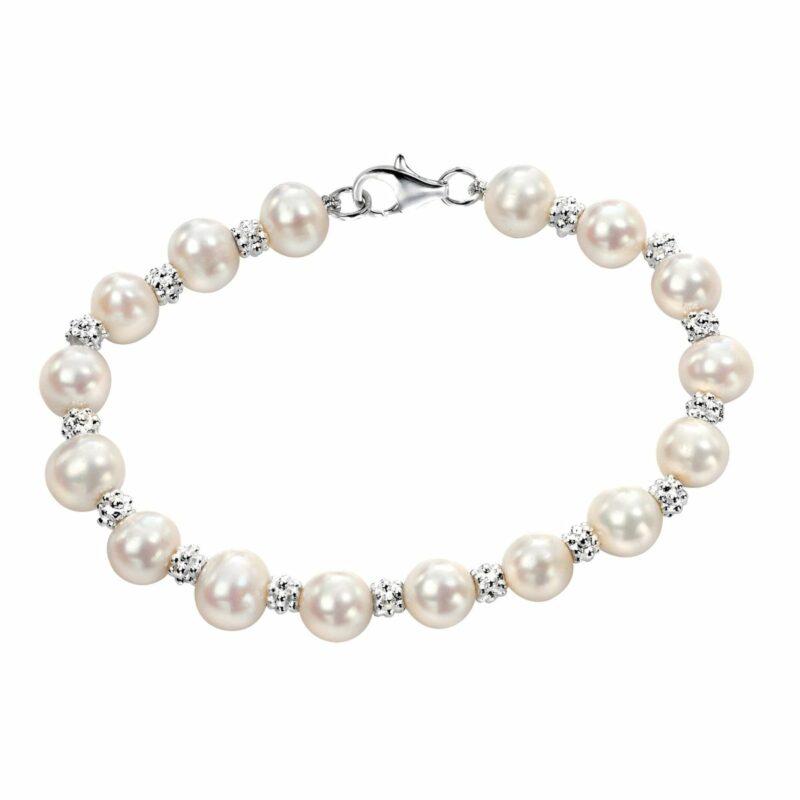
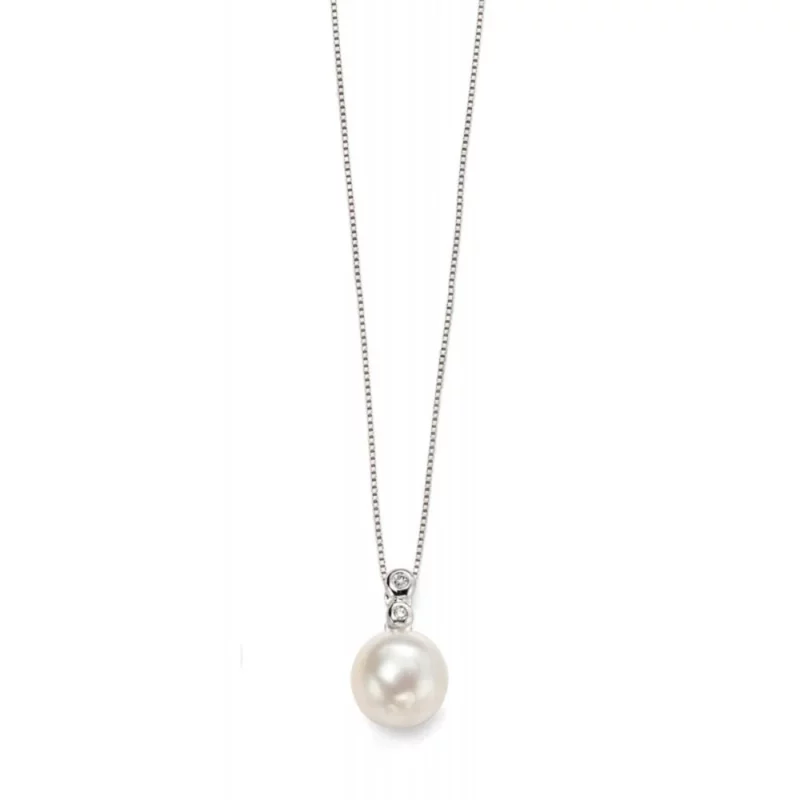
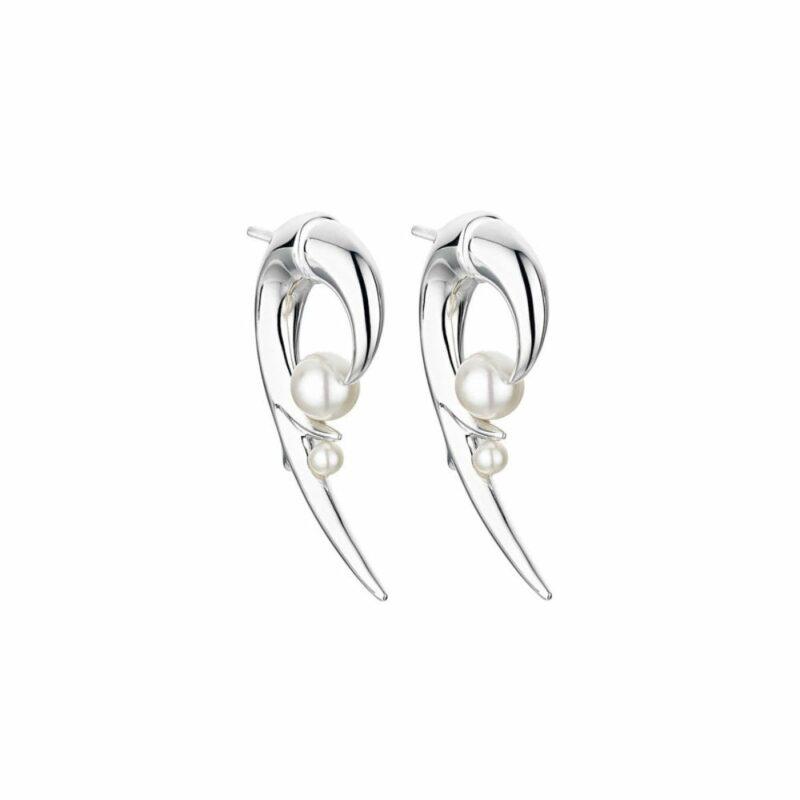
Dropping the Wedding Ring
Dropping the ring is a tradition that people find to be both lucky AND unlucky – therefore many avoid the contradictory myth completely instead of tempting fate.
Many believe that dropping the wedding ring during the ceremony shakes away the evil spirits that will surround your marriage. Getting rid of any negativity surrounding the relationship is something that a lot of couples like to do, seeing marriage as a completely fresh start and looking forward to wedded life together.
However, others believe that if the bride or groom drops the ring, they will be the first to die – something a little different to shaking away the evil spirits.
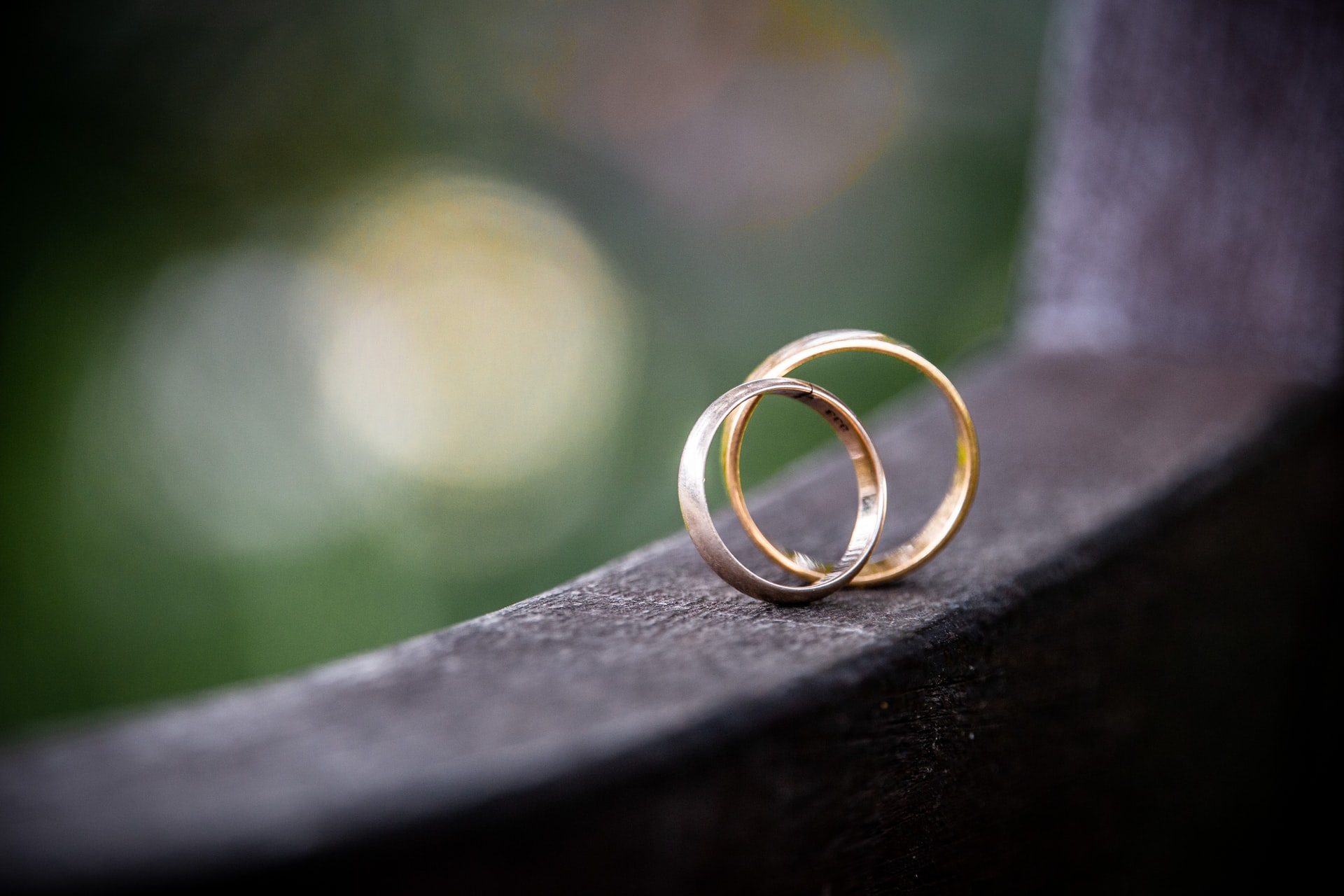
Dropping the rings is also seen as unlucky because they can very easily get lost. Dropping such a small item is tempting fate in itself, especially when it’s something as important as your wedding rings. Churches have small grates in the floors and depending on how old the building is, can have large cracks and gaps that can swallow up ring-sized items extremely easily.
Quite often, the best man or the maid of honour is given the task of keeping an eye on the rings and ensuring they are kept safe until they are needed. Ring bearers are often too young to be given the responsibility of looking after the rings for a long period of time. But if you are worried about the rings, here are four steps to ensure they are safe:
- Make sure all the vents are closed around the room where your ceremony is taking place and make sure no thick decorations are in the area where you are getting married.
- Don’t give the rings to the best man the night before your wedding. Waiting until the morning will keep your mind at rest – especially if the boys are going to have a few drinks to celebrate the upcoming nuptials and the groom’s “last night of freedom”.
- Practise the ring hand-off at the rehearsal. Decide how you are going to put the rings on and who is going to hand the rings over. Usually it’s the best man, but it can also be the vicar who is marrying you or the maid of honour, so make sure they are stood close enough to pass you them quickly and safely.
- Practise the way your ring bearer is going to carry the rings. If they are young, balancing them on a pillow is traditional, but not the safest way to do it. If you do want them to carry the rings on a small ring cushion, why not keep them in the boxes?
The Threshold
Everyone has heard of the tradition that the groom carries the bride over the threshold after their wedding or honeymoon. The superstition dates back to the olden days, where marriage was usually something that happened before a couple moved in together and the bride left her family home to then move in with her new husband.
In Medieval Europe, it was scandalous for the woman to be looking forward to consummating the marriage, so carrying the bride over the threshold was something that avoided her looking too eager.
Western Europeans believed that if the bride were to trip over the threshold to her new house, it would bring bad luck to her home and her marriage, therefore the groom carrying her was a good way to avoid this.
In very ancient cultures, the threshold was considered to be the place were unattached evil spirits lurked and a new bride was vulnerable to the spirits entering her through her feet. The groom carrying his new wife into the house meant they would avoid bringing any bad spirits with them.
However, these days a lot of married couples already live together prior their wedding, and a bride usually doesn’t need to be ‘given’ to her groom to be looked after from her father. Today, the threshold is still something that many couples do, however for different reasons. It is a romantic way for the groom to welcome his new wife into his life forever, but many couples see it as a dated tradition. Stepping over the threshold together is a great idea if you consider each other to be completely equal!
Wedding Gifts
Weddings are often a day filled with gifts to different people to thank them for their support during the run up to the big day, and from guests to the newly married couple as a thank you for inviting them and to celebrate their new lives together.
Traditionally in times gone by, guests brought fruit to weddings to give to the couple as this was seen to help encourage fertility and help them to start their own family now that they were married.
However, gifts are now traditionally household items and appliances if the couple have recently bought a home together, or many ask for vouchers or a small donation to their honeymoon fund.
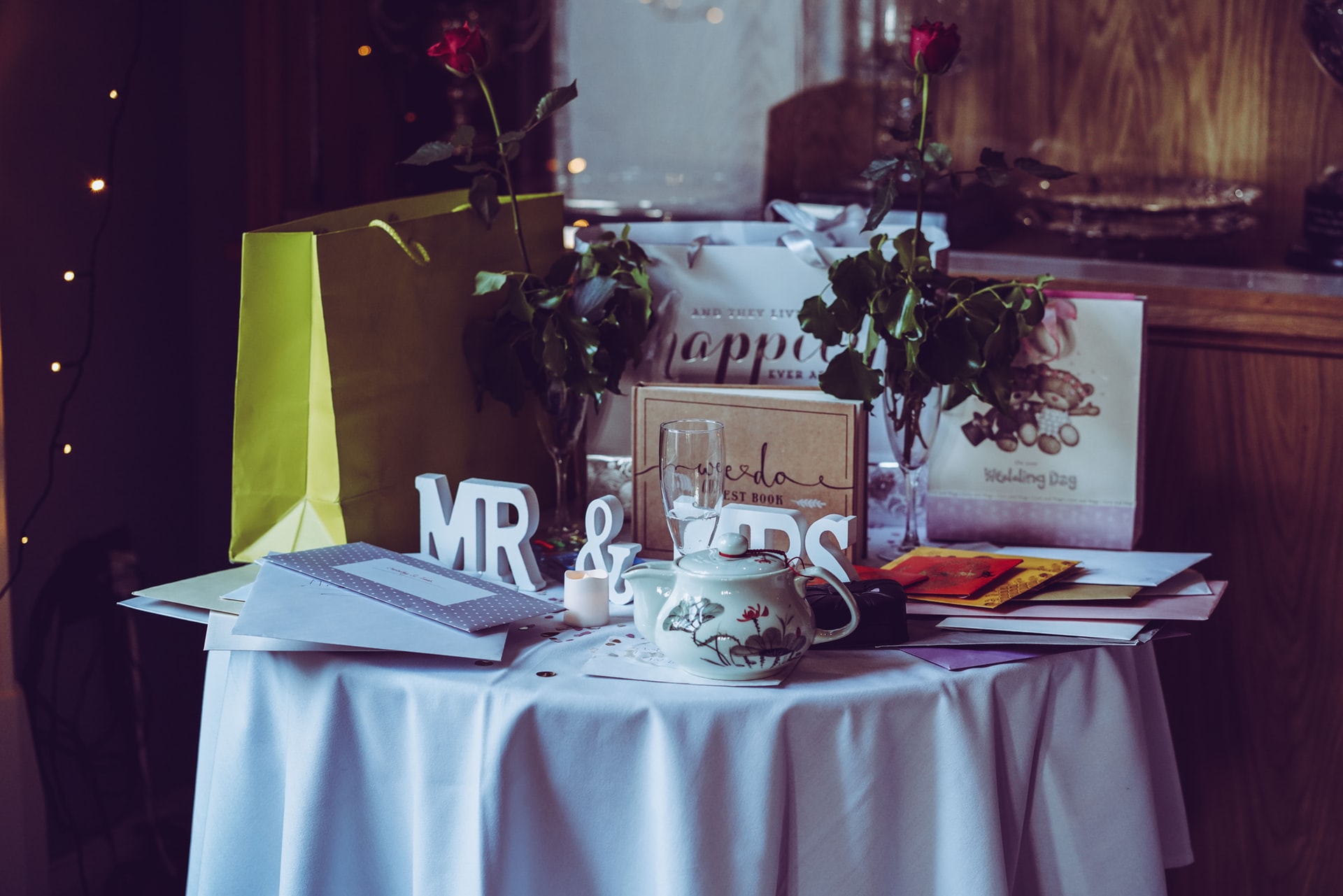
It’s also traditional for the newly-weds to give their guests a little something to thank them for attending their big day and being part of their lives as a married couple. These are usually favours. The concept of favours has been around for hundreds of years and has modernised as time has gone on. Traditionally, each guest was given five sugar coated almonds which symbolised health, wealth, fertility, happiness and long life. Sugared almonds are still often used as favours to this day. Other couples choose to give their guests keep sakes from the day such as personalised pens or magnets, a small scented candle, or mini bottles of bubbly for the ladies and beer for the men.
You may want to buy the members of the bridal party something a little bigger to thank them for their help in the run up to your big day. Your bridesmaids have probably thrown you a great hen party, organised bits of your wedding, helped you choose your dress and been a constant support when you’ve had those odd Bridezilla moments. Gifting your bridesmaids with a little something like a piece of jewellery to wear on the day is brilliant as they can then keep it forever as a reminder of your friendship.
A charm for their Thomas Sabo or Nomination bracelet is always a nice idea as it’s something they can keep forever as part of their collection of memories. This Nomination Classic Bridesmaid Charm is a perfect keepsake to show them how much they mean.
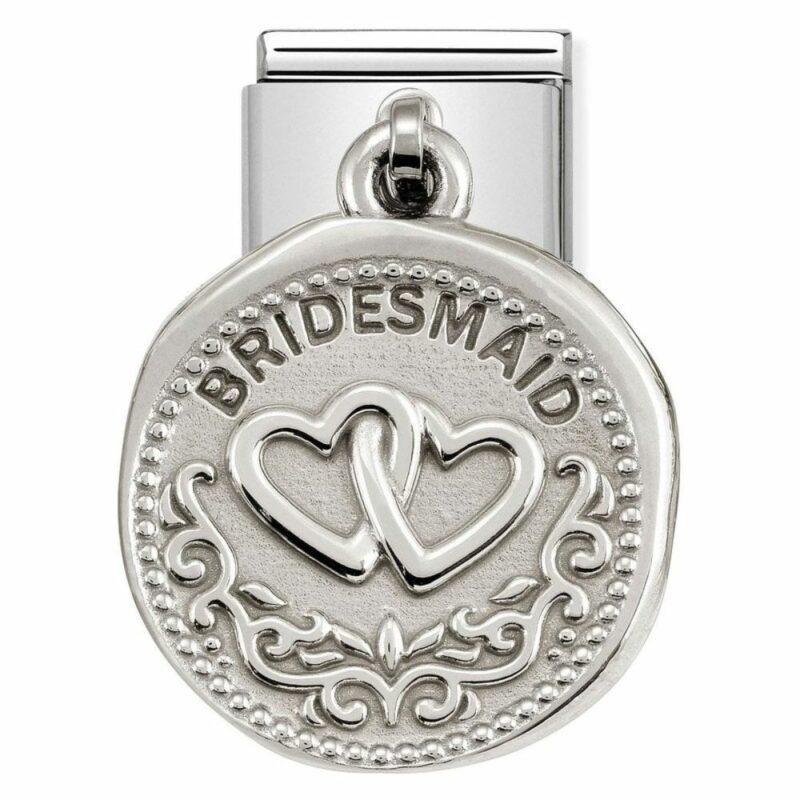
If you’re looking for something that each of your bridesmaids can wear on the day as part of their outfit, as well as to keep to wear in the future, this Nomination Gioie Silver Bracelet is perfect. The engravable plaque offers room to add a personal message, while the heart symbol represents the day as well as the love you have for each of your bridesmaids.
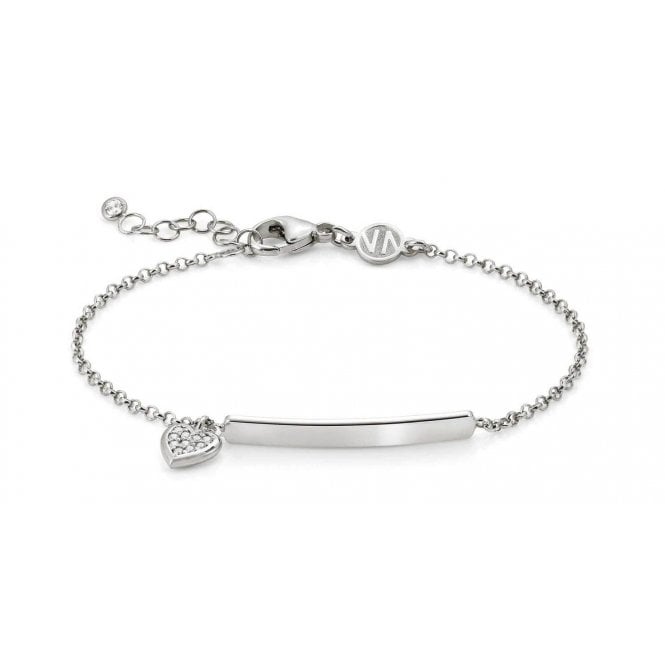
Grooms may like to get their best man and groomsmen a little something too. A popular choice is an engraved hip flask or another personalised keepsake. If you are feeling particularly generous, a watch is an ideal jewellery item for men to wear on a daily basis.
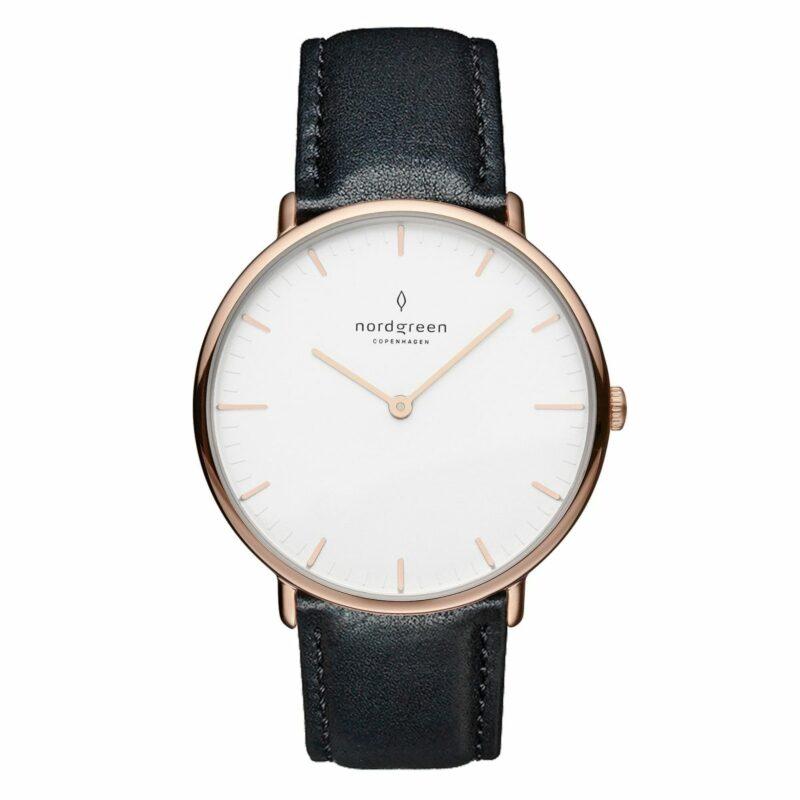
Couples also like to give their parents a little something to thank them for all they have done over the years. A lot of couples now rely on generous donations from their families to have the wedding day of their dreams, and it’s nice to acknowledge this on the day, even if it’s just the presentation of a bouquet to both their mothers during the speeches.
Wedding Day Superstitions
There are lots of good luck symbols around the world that mean different things to different cultures, and weddings are no different. Here are just a few other superstitions that different countries follow on their big day:
- A sugar cube is placed in the bride’s glove to “sweeten” the marriage in Greece.
- In Egypt, it’s good luck to pinch the bride on her wedding day.
- Instead of rice, peas are thrown at Czech newlyweds as they leave the church.
- According to Ancient Greeks and Romans, the veil protected the bride from evil spirits.
And one more for lucky English brides… apparently finding a spider in your wedding dress will bring you good luck on the big day and beyond. We’re not so sure a lot of you will enjoy that one though!
Do you know any more wedding traditions that we’ve missed out and want to share with brides to be this wedding season?
Let us know in the comments below!

